‘An ethical failing:’ Nevada tribes continue to seek repatriation of ancestral remains
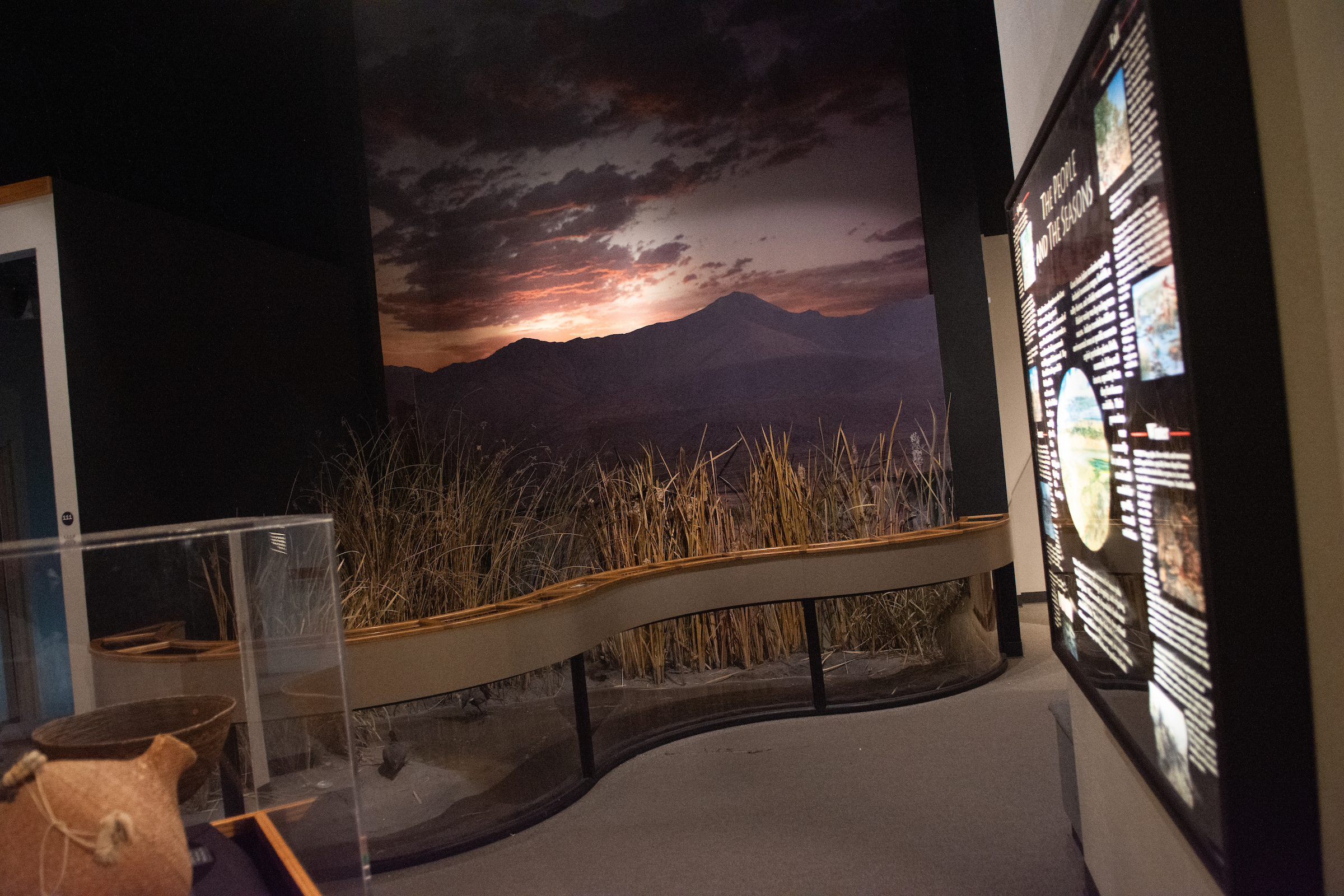
As visitors milled about the first-floor exhibits of the Nevada State Museum on a snowy Carson City morning, Josh Bonde sat with his staff in a conference room above. Compared to the quiet stillness of a museum exhibit, this area was busy as the phone rang and colleagues walked by.
The office is a side of museums that the public rarely sees, but one of significant importance as institutions, including the Nevada State Museum, UNR and UNLV, face increasing pressure to address deep and painful legacies as the storing houses of Indigenous remains, funerary items and cultural objects, taken from Native graves through looting or for scientific research — often done without consent at a time when it was still legal to excavate collections from Native burials.
During the 19th century through much of the 20th century, the federal government allowed and, in some cases, encouraged the excavation of Native American graves. For many archeologists and anthropologists, at the time, it was common practice to study remains and funerary objects that held immeasurable spiritual value for the Indigenous relatives from which they were taken.
Today, staff at many museums, such as the Nevada State Museum, are working to repatriate, or return, collections that have come to the institution over the years — from universities, surveys, federal agencies and researchers. In the back office, staff spend hours talking to tribal leaders on the phone, coordinating trainings and facilitating consultation to carry out a complicated legal process that the federal and state government has put in place to make sure repatriation occurs.
In 1990, Congress passed human rights legislation requiring institutions to repatriate ancestral remains under the Native American Graves Protection and Repatriation Act, or NAGPRA. Still, repatriation has proven to be painstakingly slow and under-resourced. More than three decades since its passage, prestigious institutions across the U.S. have lagged in complying with the law.
According to a recent ProPublica investigation, more than 110,000 ancestral remains are held by institutions in the U.S., from Harvard to Berkeley. Hundreds are held in Nevada institutions.
That includes the Nevada State Museum.
Raised in Fallon, Bonde, a paleontologist by profession and a member of the Te-Moak Tribe of Western Shoshone, is the first Indigenous director of a museum that has, like many institutions, found itself forced to address past practices used by archaeologists and anthropologists.
“The importance of the NAGPRA process to myself, as a museum director and an Indigenous person, is the act of showing respect to the people that were here before we were here,” he said during an interview in February. “It gets sensitive because there’s a number of generational traumas associated with it.”
In recent years, the museum has taken concrete steps to move forward, and it is accelerating its efforts to repatriate items. The museum, Bonde said, must be inclusive for everyone who visits.
“We want people here to feel like this is a safe space,” he said.
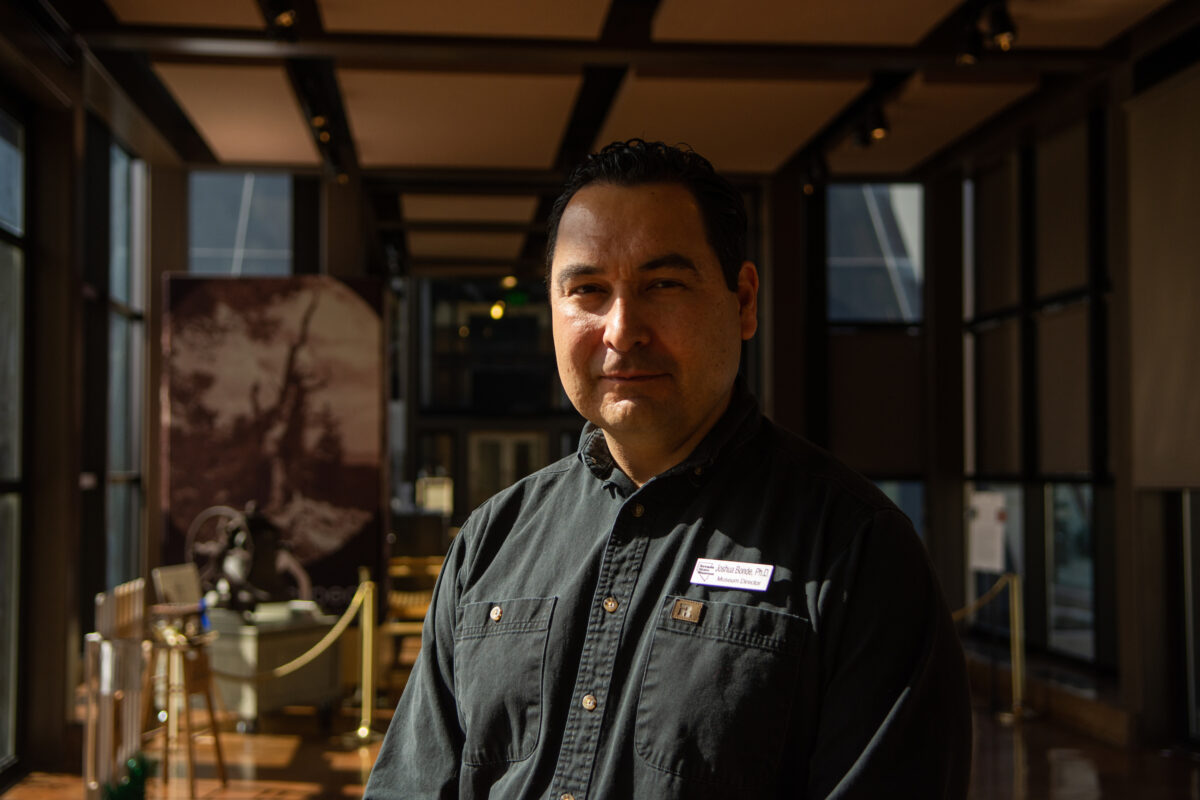
‘It’s important to get them back’
Today, hundreds of ancestral remains and funerary objects have still not been returned to the Indigenous peoples of the Great Basin under decades-old federal and state laws. Repatriation to tribes can be a frustratingly delayed process. This is not only the fault of institutions where the ancestral remains are stored. Museums and universities often curate ancestral remains on behalf of federal agencies: the Bureau of Land Management, the Navy or the Bureau of Reclamation.
Those agencies have the responsibility to conduct consultation and initiate repatriation. At the same time, many agencies are under-resourced, often lacking any dedicated staff to focus on NAGPRA. Tribal governments are sovereign nations and leaders stress that consultation must be substantive, that consultation is a requirement that cannot be done by only sending a letter.
Other ancestral remains and funerary objects that were taken from across Nevada are stored as far away as Harvard’s Peabody Museum and the University of California, Berkeley, prestigious institutions that have faced scrutiny from tribal leaders across the U.S. and in the Great Basin.
Ted Howard, a former chairman of the Shoshone-Paiute Tribes of the Duck Valley Reservation, said Nevada institutions “have done very poorly” in complying with NAGPRA. He said, in some cases he has seen ancestral remains here and elsewhere disrespectfully stored in buckets.
“We, as Indian people, still look at these remains as our ancestors — they’re our relatives,” Howard said. “Whereas science looks at them as artifacts and specimens [with] no connection. To us, spiritually, they’re still very very real and their spirits are still there. And it’s important to get them back in the ground where they belong so that the spirits can continue on their journey.”
"The university does not want to have things that don’t belong to us."
Daphne Emm-Hooper, UNR's Indigenous Relations Director
The state museum currently curates about 259 sets of ancestral remains, but it bears the legal jurisdiction to repatriate 39 ancestral remains, those that were taken on state or private land. A range of federal agencies are responsible for repatriating the other ancestral remains.
Anna Camp, a NAGPRA liaison and anthropologist at the Nevada State Museum, said the state is working to assist federal agencies with compliance and to repatriate items in the museum’s repository “as quickly as possible, but with thoughtfulness and consideration — and by doing it in the right way.”
The museum, Camp estimates, has completed more than 300 repatriations since NAGPRA was passed. But Gene Hattori, a curator of anthropology at the Nevada State Museum, said that the institution continues to receive remains under NAGPRA, whether from universities or the public.
“NAGPRA work is every day,” Camp said.
In the past, prioritization choices, staffing and internal pushback within agencies and institutions have slowed repatriation and, in some cases, hindered it all together.
That is starting to shift in some places, said Rochanne Downs, a former cultural resources director for the Fallon Paiute Shoshone Tribe and UNR’s NAGPRA liaison. Over the years, she has observed a “changing of the guards” in key roles, including at the university, where new leadership prioritized the issue.
Downs was hired in 2022 as part of the university’s Indigenous Relations Department, which is led by Daphne Emm-Hooper, a member of the Walker River Paiute Tribe. Under President Brian Sandoval, who assumed his role in 2020, NAGPRA has become a greater priority, Downs said, noting UNR’s investment in staffing, consultation and a universitywide inventory of collections.
The university has identified 16 collections that fall under NAGPRA, some of which are overseen by federal agencies, including the Bureau of Land Management and Fish and Wildlife Service.
“The university does not want to have things that don’t belong to us,” Emm-Hooper said.
But, she stressed the process only works with meaningful and ongoing consultation with Native American tribes to avoid making assumptions involving what proper repatriation should look like.
“The tribes guide us,” she added. “It’s not our decision. It’s the tribes.”
Since NAGPRA went into law, UNLV’s anthropology department has curated more than 300 ancestral remains and funerary possessions. It has repatriated 13 ancestral remains and funerary objects and has transferred 209 items to federal agencies. The department remains in possession of 95 sets of ancestral remains, sets that sometimes also include funerary objects.
Daniel Benyshek, the chair of UNLV’s anthropology department, said the UNLV administration is committed to returning these items expeditiously, noting that UNLV recently pledged $30,000 to assist with tribal consultation and provide resources for the physical costs of returning the items.
“I think the overwhelming majority of anthropologists today see the removal and possession of Native American ancestral remains and funerary objects as an ethical failing on the part of the discipline and the academic community in general,” Benyshek said.

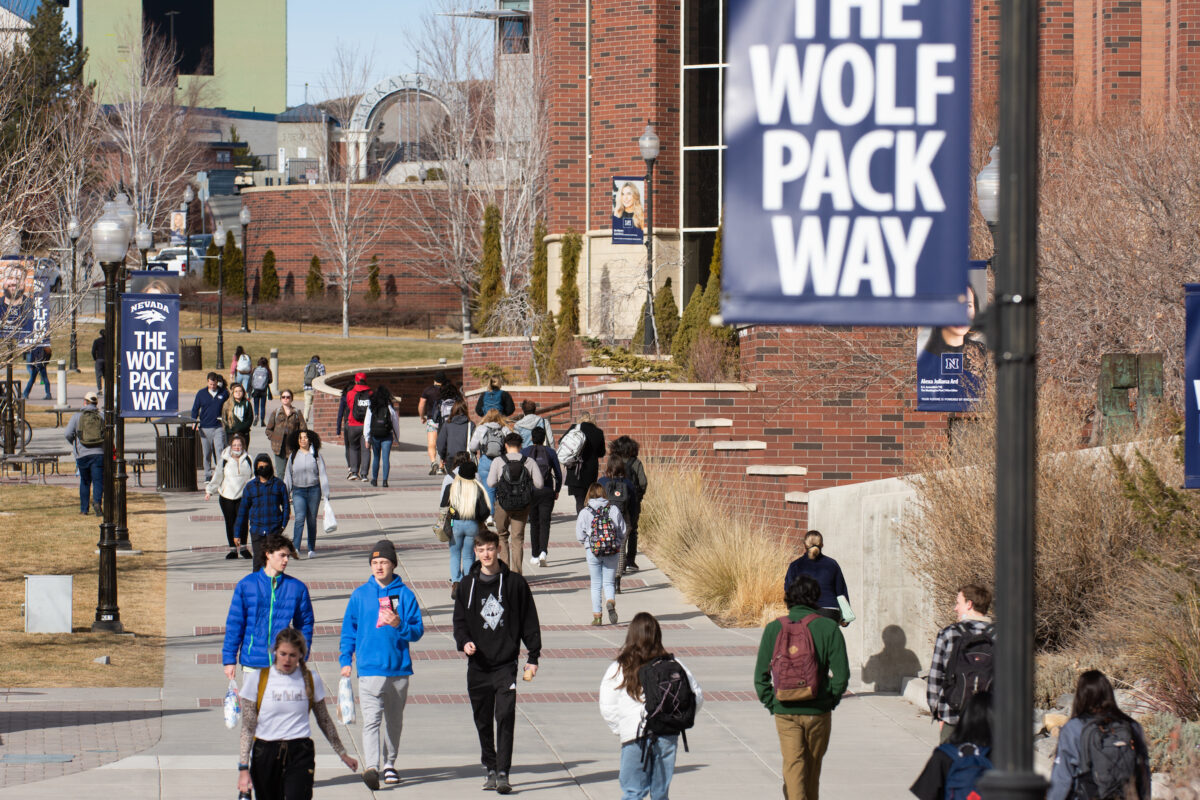
‘Nor has meaningful consultation taken place’
The commitment to repatriation among Nevada’s three largest institutions marks a change from decades ago when it was legal and even encouraged for academics to collect grave items. Yet the slow process of repatriation, for many, continues to reflect the difficulties of turning intention into reality — recognizing tribal sovereignty and oral history — without continued pressure from tribal officials.
Michon Eben, the tribal historic preservation officer for the Reno-Sparks Indian Colony, said it is important to underscore past actions — the removal and the storage of human remains without consent — were often encouraged by the government and permitted under laws created without Native American input, stemming from a view that objectified Native Americans as a “curiosity.”
In the 1800s, as the U.S. Cavalry was targeting Native Americans across the West, “the United States government is telling native Indigenous people there’s no place for you in our America,” Eben said. “However, our Native American artifacts and our ancestral remains are highly valued because that’s when museums are coming in — people need to fill those exhibit cases.”
“They’re exhibiting the natural history section, the dinosaur section and then the Native section, so we’re history,” she said. “We’re dinosaurs. We’re a curiosity. So that sets up America for what Indian people are… We’re prisoners of war and then they’re sending us off to boarding schools.”
She said those attitudes sometimes persist to this day, setting up a tension between academics and institutions who want to study Native American tribes as though they belong to a past time.
“Our dead relatives need the same respect as anybody else's dead relative,” Eben said.
Since NAGPRA was passed in 1990, Native American tribes have had to fight for full representation in the repatriation process and push agencies to respect their claims. In recent years, state lawmakers have intervened to elevate Indigenous voices in the process of repatriation on state and private lands.
Yet even in cases where lawmakers have acted, implementation has lagged.
In 2017, a bipartisan bill sponsored by former Sen. Julia Ratti (D-Sparks) tasked the Nevada State Museum and the State Office of Historic Preservation to create rules, in consultation with tribes, to set forth a process for the repatriation of human remains and funerary objects. It also created a permitting framework for known Native burial sites that are located on private lands.
The Nevada State Museum crafted its regulations with multiple workshops over several years.
The process of writing the Nevada State Museum’s regulations was challenging at times. Tribal leaders had to work within the confines of the 2017 law, which some said attorneys for the state interpreted as narrow in scope.
It forced painful conversations about the state museum’s legacy in storing funerary items, then doing scientific experiments on them, and initially stalling a major repatriation effort in the early-1990s. Eben recounted a first meeting where staff sat at the front of the room, inappropriately positioning tribal leaders as an “audience” or “less than.”
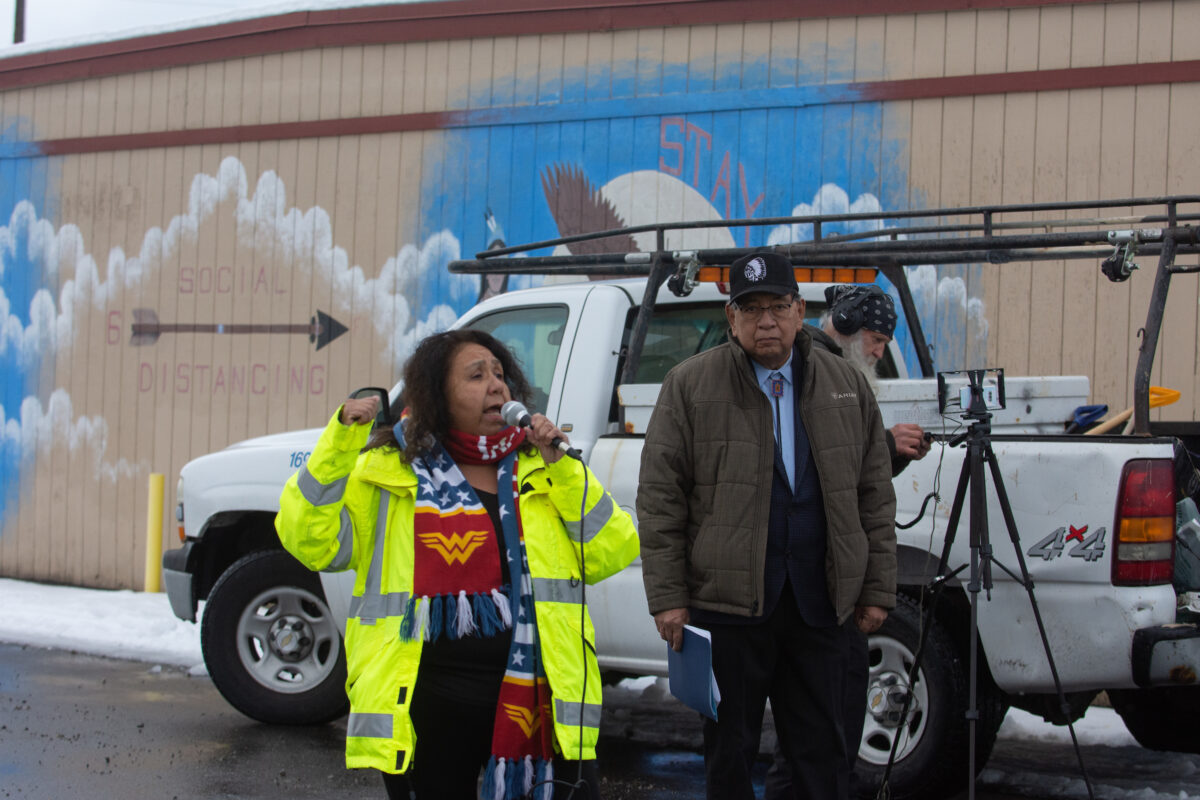
“A few minutes later they were switching the room around,” she said.
Marla McDade Williams, who was then the lobbyist for the Reno-Sparks Indian Colony and is a member of the Te-Moak Tribe of Western Shoshone, said “going through the regulations was not an easy process,” noting also that there had been recent changes in staff at the museum.
But the state museum’s regulations were ultimately completed.
Six years later, however, the State Historic Preservation Office never adopted regulations for the repatriation of ancestral remains and funerary objects. Lawmakers are now seeking to require them to do so this year with a bipartisan bill that passed in the Legislature with no opposition.
John Oceguera, a lobbyist for the Reno-Sparks Indian Colony, a former speaker of the Nevada Assembly and a member of the Walker River Paiute Tribe, told lawmakers in March that “since 2017, the regulations have not been promulgated nor has meaningful consultation taken place.”
He said that “bluntly, this is one of those situations where the Legislature is now, as my former colleague Barbara Buckley used to say, ‘telling the agency we really, really mean it this time.’”
However, the final legislation, SB364, exempted the historic preservation office from doing direct consultation in completing the regulations, leaving that to the Nevada Indian Commission.
The office did not respond to a request for comment, except to say the agency does not have authority under NAGPRA, that the agency’s repatriation role is “clearly defined in NRS 383.160” and had no additional comment on questions, including why the office is not directly conducting consultation for the regulations, something the referenced statute requires in other instances.
The State Historic Preservation Office developed a policy focused on repatriation, but it never codified its procedures as a formal regulation that included substantive consultation with tribes.
SB364 requires the office to complete its regulations by the end of the year.
Existing law outlines a consultation role for the office in the case of inadvertent discoveries of ancestral remains and funerary objects. The office, for instance, is required to notify tribes of inadvertent discoveries, helping to oversee the sensitive treatment of items and their disposition. The law states the office must “endeavor” to protect Native burials in consultation with tribes.
The state enacted some of these laws in 1989, one year before NAGPRA.
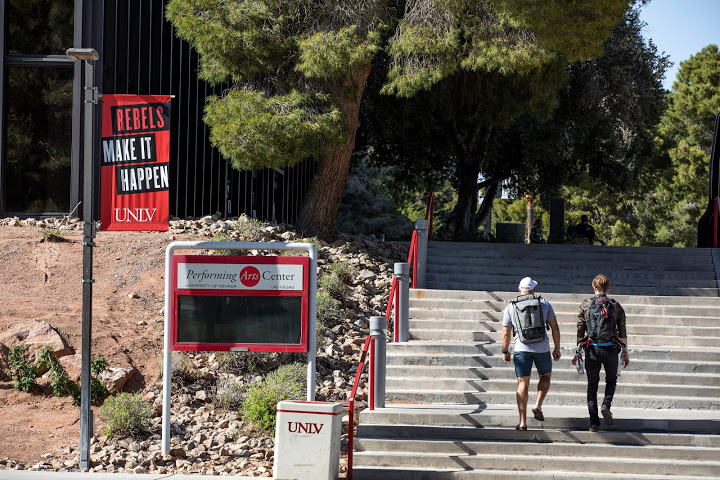
‘We knew where our burials were at’
Although NAGPRA required the return of ancestral remains from institutions that receive federal funding, some museums — and even arms of the federal government — put up major roadblocks to repatriation when the law was first passed.
For decades, the Fallon Paiute Shoshone Tribe sought the return of 10,000-year-old ancestral remains taken from Spirit Cave in western Nevada and on land that is today controlled by the Bureau of Land Management. The remains were first excavated in the 1940s by Sydney and Georgia Wheeler, two archeologists who were working on behalf of a state parks commission.
Federal land managers, under the Department of Interior, would later control the remains of four individuals and 10 funerary objects from Spirit Cave, and they would be curated at the Nevada State Museum. In the mid-1990s, after NAGPRA had been passed into law, the Bureau of Land Management and the Nevada State Museum permitted destructive scientific examinations of the funerary objects and nondestructive exams of the remains, according to a 2004 federal lawsuit.
In 1994, a Nevada employee for the Bureau of Land Management co-authored a paper stating that NAGPRA “represents one of the anti-science social trends developing in the United States.”
That same year, a museum official wrote that some of its most important artifacts were “human grave goods,” and said the state museum needed to work with the federal agency “to preserve information from these burials before repatriation destroys their scientific value forever.”
“Why is it that tribes have to prove that this is our ancestry, this is our cultural items. How come museums and archeologists don’t have to prove why they get to keep everything?”
Michon Eben, Tribal Historic Preservation Officer for the Reno-Sparks Indian Colony
In 1997, the Fallon Paiute Shoshone Tribe told the federal government it sought the repatriation the Spirit Cave assemblage, with the support of other Great Basin tribes and the National Congress of American Indians. But it was not until 2016 — two decades later — that repatriation would occur.
The Bureau of Land Management and the museum initially pushed back, dismissing the tribe’s oral histories and knowledge of their ancestral homelands: They found that Spirit Cave remains were not culturally linked to the Fallon Paiute Shoshone Tribe.
In 2001, after a NAGPRA review board voted 6-1 that the agency did not give a “fair and objective consideration and assessment of all the available information and the evidence in this case,” the agency still resisted the claim.
In 2004, the Fallon Paiute Shoshone Tribe pursued its case in court, arguing that the Spirit Cave remains were culturally identifiable and required repatriation under the law. Claiming they were supported by archaeological and anthropological data, federal land managers still pushed back.
As for the museum, it eventually changed its course, largely turning over the process to federal land managers. Hattori, who joined the staff in 1999, said a “significant turning point” took place under the administration of Republican Gov. Kenny Guinn, who was elected governor in 1998.
Prior to his election, the museum had planned an exhibit centered on Spirit Cave, but it was canceled after tribal leaders raised concerns. Instead, the museum opened up “Under One Sky,” a standing exhibit, created in collaboration with Native American leaders, that includes Indigenous perspectives.
Finally in 2016, federal officials agreed to repatriation, only after the tribe reluctantly allowed for DNA testing, the results of which confirmed what its members said all along: That a 10,600 year-old skeleton removed from Spirit Cave was most closely related to contemporary Native Americans.
“We always knew,” said Downs, who, before working at UNR, was a cultural resources director for the Fallon Paiute Shoshone Tribe. “We knew where our burials were at. Our ancestors, our grandparents, were crying as they were going through and taking them out. There’s nothing we could do. We couldn’t even vote [at the time] — we weren’t even citizens at the time that those places were taken out.”
On top of the trauma and mistrust caused by the destruction of these sites, having to then prove a cultural relationship existed with remains, to initiate repatriation, only further added to the pain.
“Why is it that tribes have to prove that this is our ancestry, this is our cultural items,” Eben said. “How come museums and archeologists don’t have to prove why they get to keep everything?”
Howard, who supported the repatriation of the Spirit Cave remains in his role at the Duck Valley Indian Reservation, said he hoped the Spirit Cave reburial would create a trend to return items.
“But to my knowledge,” he said, “I don’t think there has been.”
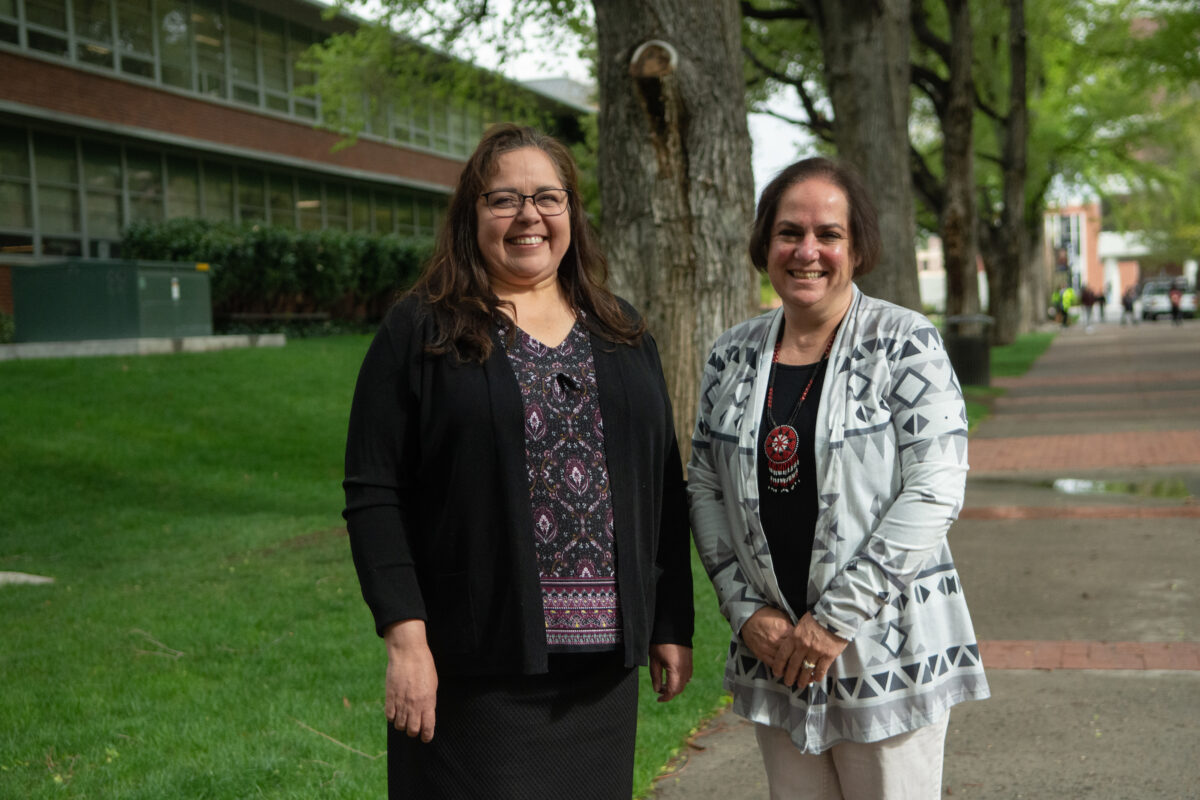
‘Fragmented and poor records’
NAGPRA distinguishes between culturally identifiable and unidentifiable remains, defined in law as those with no identity that can be “reasonably traced.” In the years after NAGPRA passed, as ProPublica reported, some institutions blocked repatriation by categorizing the remains in their collections as unidentifiable.
In other cases, a lack of strong records and a lack of prioritization within institutions has impeded the process of inventorying remains and legally returning them.
“Like so many institutions, we have from that pre-NAGPRA period fragmented and poor records of where a lot of these remains came from, if those records exist at all,” said UNLV’s Benyshek.
In some cases, remains came to be stored at institutions on behalf of federal land managers. In other cases, they were transferred from other institutions for research and analysis. Benyshek, who joined the anthropology department in 2001, said he heard stories about graduate students in the 1970s and 1980s discovering human remains while in the field and bringing them to a lab to be studied. It’s a practice Benyshek, as department chair, said he would never allow today.
“At that time, that was just considered a standard academic and research process,” Benyshek said. “Today we shudder at the thought of that. But this was the reality in the 1970s and 1980s.”
Sheilagh Brooks, a former UNLV anthropologist for whom the school’s osteology research lab is named, was mentioned in at least two federal notices involving repatriation of remains. In 2018, UNLV reported remains collected by Robert Hopkins from Indian Springs in Clark County. They were given to Brooks and identified as remains of an infant no older than 12 months.
In the collections, with the remains, were funerary objects, including beads around the infant’s arm and neck, materials used to create a cradleboard, vegetation used as matting and a rope.
Benyshek said the university is committed to repatriation and addressing any roadblocks in the process, from hosting a roundtable summit with tribal leaders to assisting with repatriation itself.

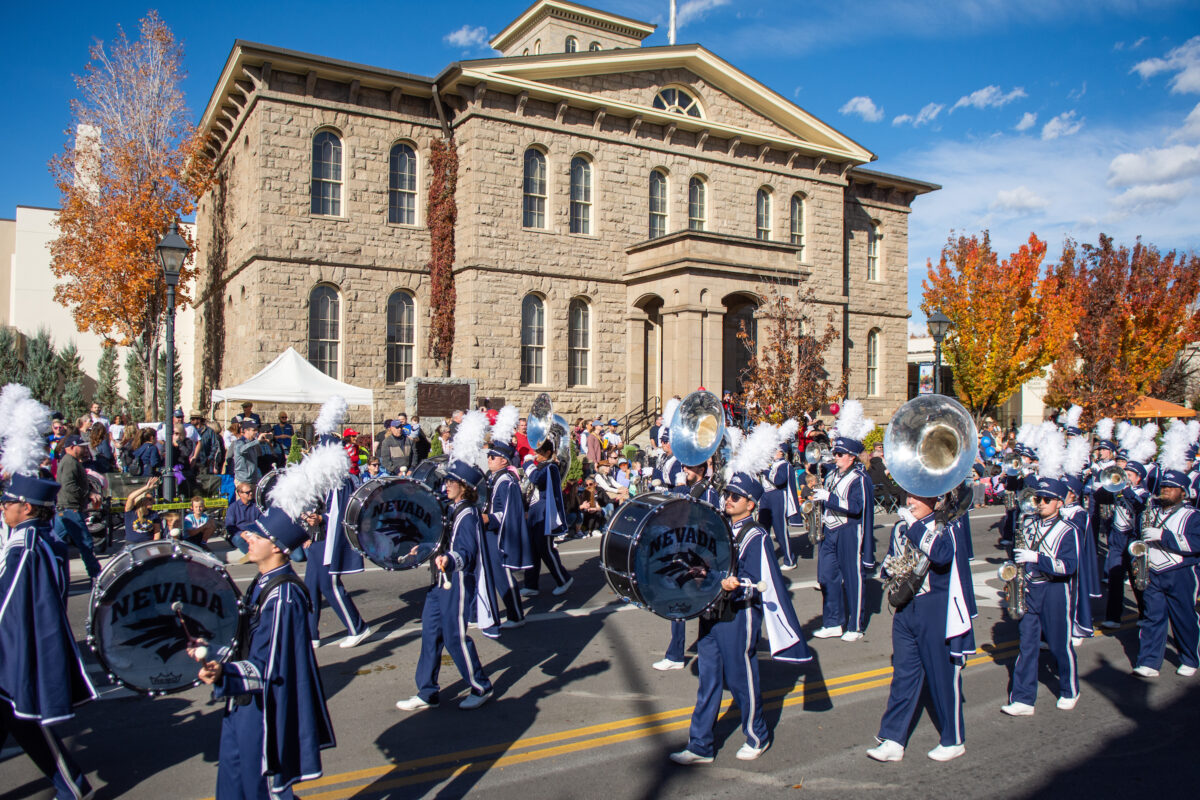
“I think that reflects the change in how so many institutions, departments that have unethically held these remains for so long, increasingly feel about a sense of the past of the discipline — and trying to own up to that and trying to make it right as best we can,” Benyshek said in May.
Today, many of the remains held by institutions in Nevada are considered unaffiliated. In 2010, two decades after NAGPRA passed, the National Park Service, responsible for carrying out the law, gave museums guidelines for returning remains and funerary objects that are unaffiliated.
When the state initially inventoried its collections, Hattori said it could not satisfy many criteria defined in NAGPRA to identify a cultural affiliation. The same was the case for UNR and UNLV.
“As a result — and this is not only us but many museums with archeological programs, the vast majority of our remains were classified as unaffiliated,” Hattori said. “We couldn’t legally repatriate them until the National Park Service came up with the regulations.”
After 2010, experts said the process continued to lag with few dedicated employees working on NAGPRA compliance, inadequate funding and a lack of prioritization. Tribes continued to raise the issue, placing pressure on agencies and museums.
In 2017, lawmakers increased the state museum’s resources with the hiring of an additional curator, the position that Camp now holds.
There are several steps in the process to legally complete repatriation, Camp said, and many smaller tribes face obstacles, including the lack of funding and dedicated staff. In many other situations, all the state museum can do is assist a federal agency responsible for repatriation.
“I’m very realistic about it, and we’re not forcing the issue. It’s happening slowly. It needs to be a thoughtful process. Each case is individual. Each tribe is individual and has a different process.”
Still, cultural resource officers like Eben want the museum and others to move faster. At a recent meeting for the board overseeing the museum, she criticized staff for not moving fast enough.
“I had to tell her,” Eben said, “why do you still have all these remains?”
Bonde, as an Indigenous scientist, said he understands the issue from a personal side — “just how deep these hurts were and are.” The museum, he said, is doing its best to move quickly.
“Being here at the museum and seeing the efforts that go into fixing the problem and the efforts that go into fixing those relationships and the respect shown to the tribes through the process, I’m really proud of the work that [we] do in trying to do our part to heal that generational trauma,” Bonde said.
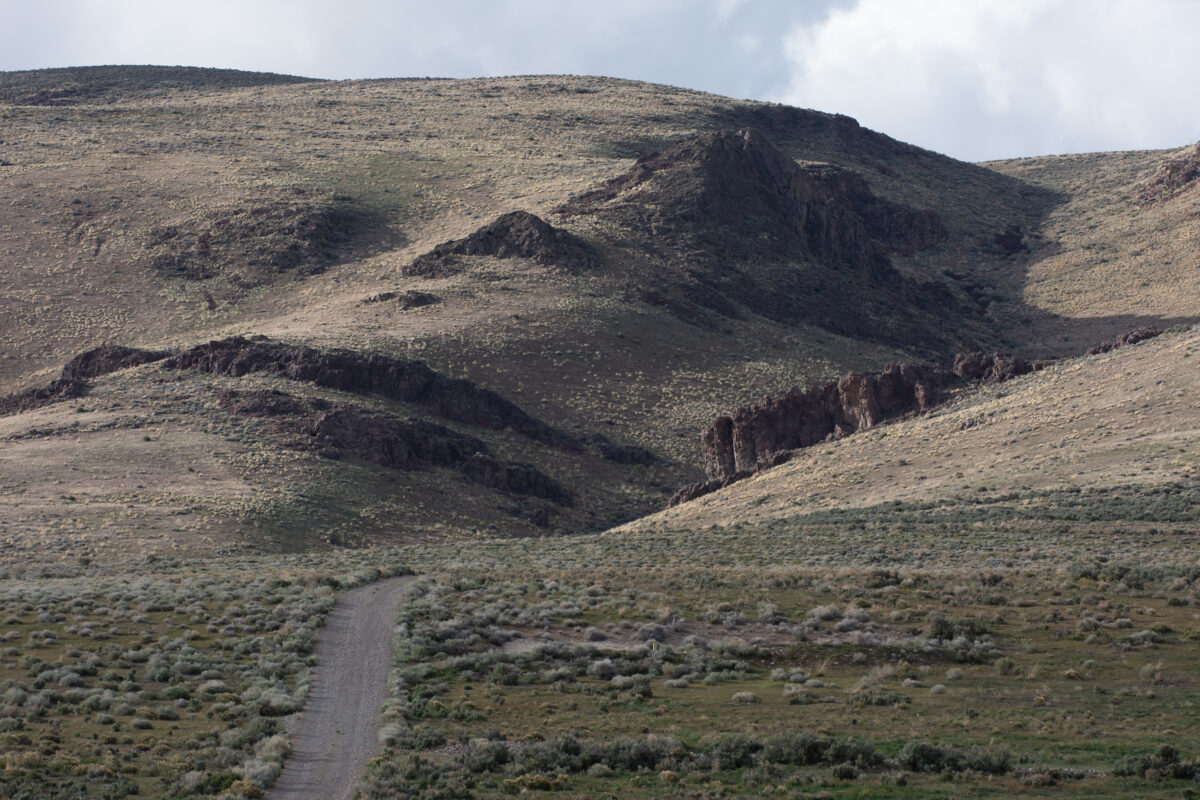
‘To look a little deeper’
Eben, with the Reno-Sparks Indian Colony, said there is another part of NAGPRA that agencies need to do a better job following: Protocols for inadvertent discoveries and known burials that could be disturbed by current development on public land. This is especially important, Eben argued, as federal land faces pressure from energy and mining development.
Federal laws, including NAGPRA, require agencies to consult with tribes if archeological digging occurs or new discoveries are made. But land managers have not always abided by these rules, Eben said. She points to the Thacker Pass lithium mine, where, she said, land managers did not adequately weigh reports of a massacre in the area.
BLM Nevada, not commenting directly on Thacker Pass, said it is committed to complying with NAGPRA. The agency noted that it is required to consult with tribal officials when an excavation could likely uncover human remains or when an inadvertent discovery is made.
Earlier this year, the Reno-Sparks Indian Colony, Summit Lake Paiute Tribe and Burns Paiute Tribe sued the agency, alleging it did not conduct adequate consultation or fully weigh concerns about how activities at the mine could impact land with religious and cultural significance. A U.S. District Court judge denied a legal request, as part of the case, to halt construction on the mine, a decision that followed an earlier case in which the judge dismissed similar claims, largely affirming a federal permit for the mine.
For weeks, Northern Paiute and Western Shoshone tribal elders and supporters have camped near the site at Ox Sam Newe Momokonee Nokutun, or Ox Sam Indigenous Women’s Camp.
The camp reported, in a press release, that law enforcement raided the area last week, destroying and mishandling ceremonial objects. The incident came after members of the camp put their bodies in front of excavation equipment to halt construction near the mine site. The camp is named for Ox Sam, one of the survivors of the 1865 massacre in the area.
In an article by Underscore News, the Humboldt County Sheriff’s Office denied destroying sacred objects, tearing down tipis at the camp and extinguishing a sacred fire. Some of the protesters at the camp were members of the McDermitt Paiute and Shoshone Tribe, whose government has supported the lithium project, entering into a community benefits agreement with the mine.
Lithium Americas, the company developing the mine, and federal land managers have said they would follow the process and abide by any federal laws if human remains were found.
But Eben said the federal agency should have initiated consultation involving a wider group of Great Basin tribes, including the Reno-Sparks Indian Colony.
“You need to initiate consultation,” she said. “They didn’t do that.”
Advocating for NAGPRA compliance, Eben added, often feels as though she is on the opposite end of science, arguing with archeologists who she said can appear dismissive of oral histories. She said that the science often seems geared to promoting “culture for sale,” taking Native culture and tradition to curate it in museums without the consent of tribes.
Eben said archaeology seems to be changing as a younger generation enters the field. An older generation started their careers without talking to Native people, which is not the case with younger people. Recounting a recent archeology panel she participated in, she noted a difference in talking to young people: “Those young people that came, they were committed."
“They asked the following question: “What can we do better as up and coming archeologists?”
Still, there can remain a level of mistrust, Eben said. What are the motives of archaeologists and anthropologists? Are they doing research with consent? Tribes were often burned by past efforts to pursue pseudoscience, debunked racist theories about skull sizes, requests to hold ancestral remains for testing and efforts to appropriate Indigenous knowledge to seek financial gain.
As institutions grapple with their legacies of holding human remains, others are looking farther into the future, trying to redefine the relationship between academic research and tribes in how students are trained. Emm-Hooper, director of UNR’s Indigenous Relations Department, said she is working with academic deans to look at research protocol and processes more broadly.
“If you’re proposing research, are you being culturally sensitive? Are you asking permission?” she said. “And I think that’s something we need to do as a university — to look a little deeper.”
